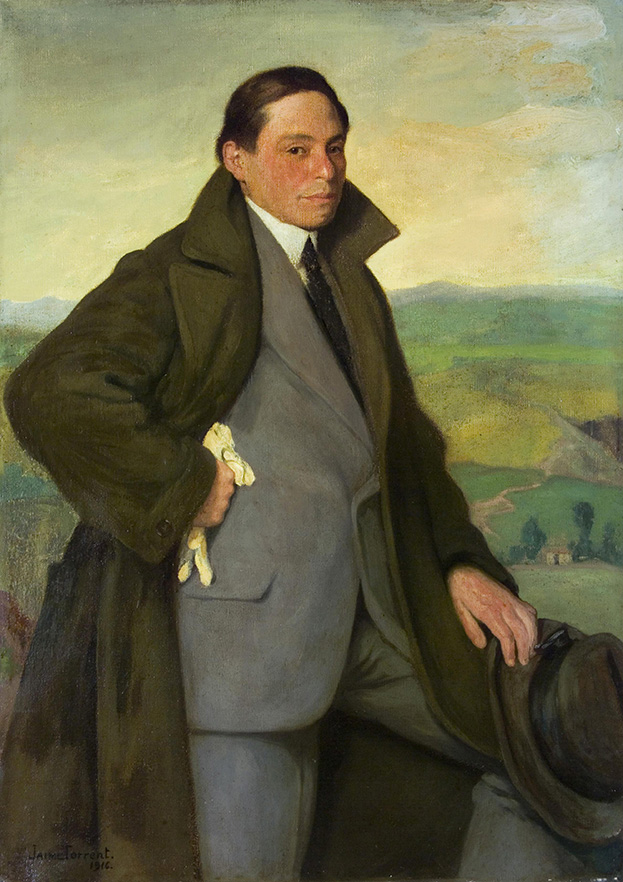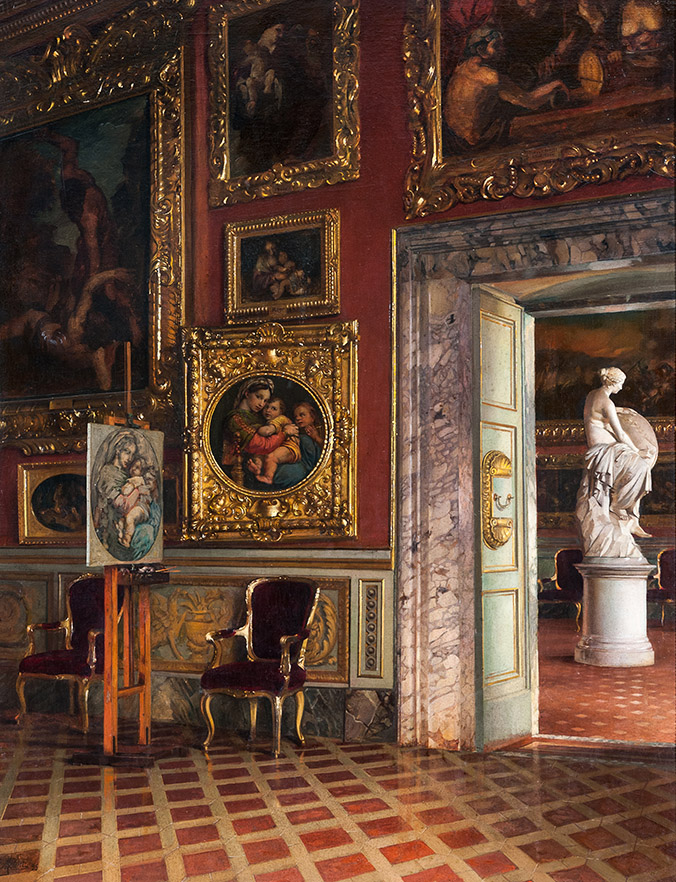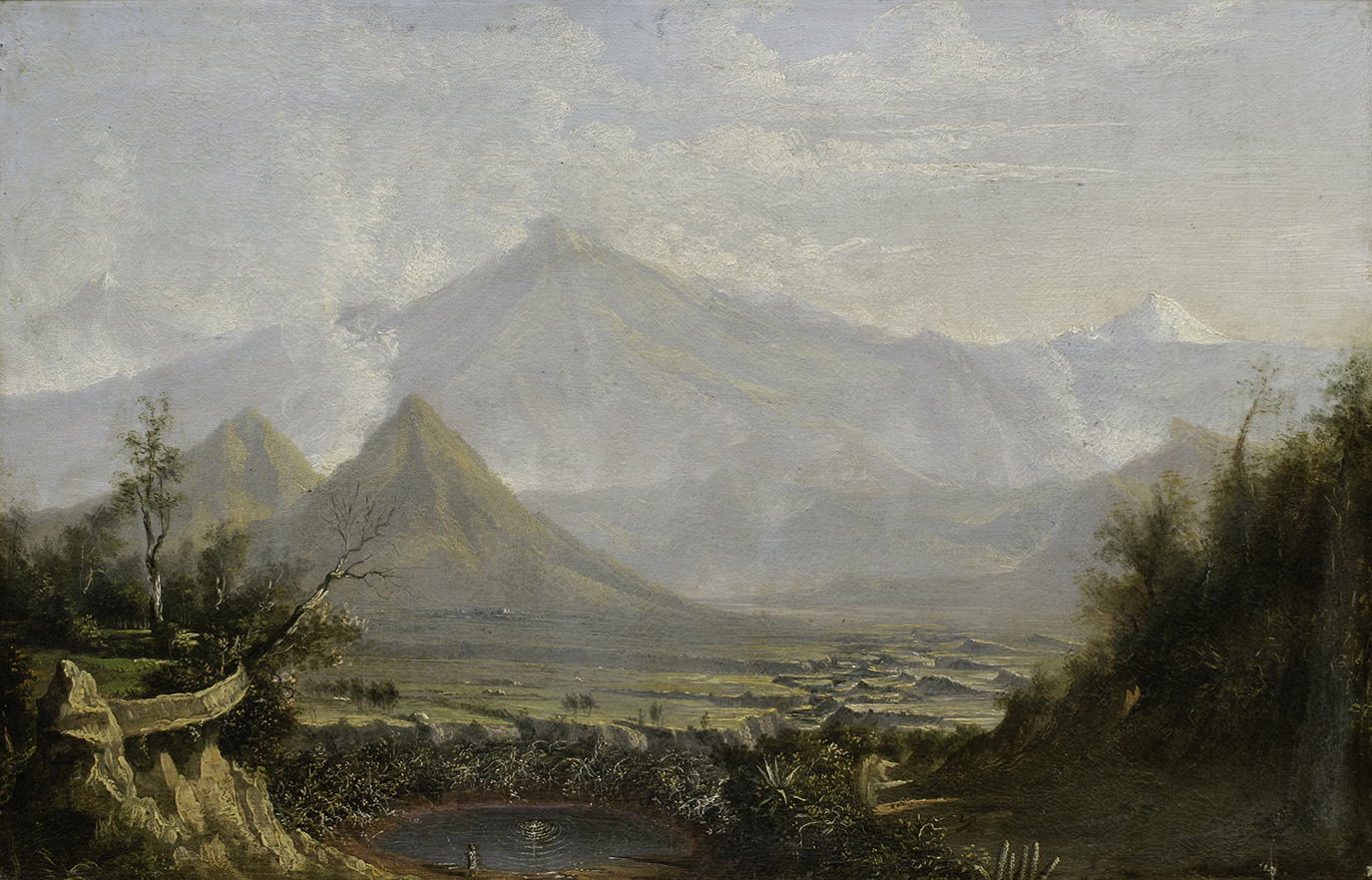The hobby or trade of collecting artistic works has traditionally been exercised by people with a profile and a relatively similar economic-social position. As a general rule, art collectors have been wealthy people belonging to influential and economically privileged sectors. In Chile some “historic” collectors responded to this profile, such as the cases of Eusebio Lillo, Luis Álvarez Urquieta, Fernando Lobo Parga, Pascual Baburizza and Ricardo Mac Kellar, among others.
But there is another facet of private collecting that is interesting to comment on. It is a small-scale collecting that developed in Chile from the fifties of the last century and that, apart from the artists, had other actors as protagonists. One of them was the buyer, generally a professional or merchant from an emerging middle class, who saw in the conformation of these small collections the opportunity to build up a heritage for their enjoyment, or also the possibility of dressing with a certain solemnity and culture. their social position. On the other hand we have the seller of paintings; a character who traveled the country with paintings in tow and who, many times, agreed prices in installments, according to the purchasing power of the buyers.
The absence of galleries or periodic exhibitions in the provinces -with the few exceptions of Valparaíso and Concepción- led to this sort of first exercise in decentralization of the art market in a country that -then and still- strongly concentrated its artistic processes related to training, heritage and artistic dissemination in the Capital. Only in the mid-1960s, with the creation of the Regional University Colleges, later regional headquarters, dependent on the University of Chile and the State Technical University and according to the professional training and Extension programs of these schools, they were generating artistic careers and exhibition programs that fostered both the formation of institutional collections, as well as the opportunity to develop this type of collecting that we have called "small scale".
Cover of the recently released book: The Abode of Light. Authors: Pedro Emilio Zamorano Pérez and Rodrigo Gutiérrez Viñuales.
Small-scale collecting concentrated the work of two types of artists. In the first place, the local artists, who lived and developed their projects from the province. On the other hand, we find a group of artists with greater national visibility who acted in the academic or commercial circuits of Santiago, among which the painters of the 1940 generation stand out. The work of these artists had something special that interested these collectors. . According to Isabel Cruz, "In most of these painters the love for Chilean nature, for costumbrist scenes, for interiors, the splendor of a still life or the plasticity of a figure in meditation resurfaces" (1). His grosso modo aesthetic language was closer to the figurative, combining elements of both impressionism and expressionism. The works of the artists of 1940, especially their landscapes, reunited collectors with familiar places, characters and objects and this aroused their interest. The size of the works, of medium format, was also a good ally since it kept a harmonious proportion with the walls of the chalet. In this way, small groups of works were formed that, most of the time, did not exceed a dozen paintings.
In this context we can understand the action of Julio Vásquez Cortés, whose professional career and his passion as a collector, unnoticed until now by the historiography of Chilean art, is the subject of this book (2). It represents, for various reasons, the figure of a completely atypical collector with respect to the paradigm with which this type of character and profession is usually characterized. Vásquez Cortés was a public employee, calligrapher, of the country's Ministry of Foreign Affairs. His status as a state official places him socially as a member of the Creole middle class, which adjusts his life from a monthly salary that, as a general rule, reasonably covered the maintenance costs of a family. “Although it is true that I did not have a fortune, I was able, through some effort, with my modest official salary, to acquire some of his works. I remember that many times, between buying a suit or a painting, I had to decide for the latter” (3).
In this way, this collector systematically and with few resources gathered an important set of works focused, fundamentally, on the pictorial creation of the artists of the so-called Generation of 1913 or the Centennial, which departed so much from the academic precepts traditional, still in force in the School of Fine Arts at the beginning of the 20th century, as well as the avant-garde proposals that began to have visibility from the Montparnasse group exhibition, held in 1923. For this important collection to be formed, certain circumstances were given such as the closeness of Vásquez Cortés with one of the main figures of that group, the painter Exequiel Plaza, his brother-in-law, and through him, the friendship with others such as Pedro Luna, the Lobos brothers, Paschín Bustamante or Ulises Vázquez.
Julio Vásquez Cortés, endowed with sensitivity and knowledge, managed to gather over many years a representative sample of works by these artists, meritorious in terms of quality and quantity, with a view of integration and with full awareness of building a chapter of national painting. Not in vain the artist Carlos Isamitt asserted in 1946: “Truly here is a singular fact, unique in our country: a lover of pictorial art owns most of the production of a generation of artists. How could such a strange event have been generated in our midst?” (4).
Ezequiel Plaza: Bohemian painter. Oil on canvas. Measurements: 100 x 65 cm. Vásquez Cortés Collection, today in the Art Gallery of the University of Concepción. Chili.
Vásquez Cortés was clearly aware of the need not to disperse the collection, while ensuring a suitable place and destination for it, where it could be preserved and disseminated. This is how the University of Concepción, under the leadership of David Stitchkin, a visionary rector and very sensitive to cultural issues, capitalized on this heritage, which is today the basis of the University Art Gallery. The collection consisted of 543 works, which were formally delivered on January 16, 1958, by virtue of an agreement between the Institution and the collector. This act served to give an identity card to the artists of the generation of 13 and ensure them a prominent place in Chilean painting, forming the most important group that exists in Chile in this regard.
Notes:
1. Cruz, Isabel, History of painting and sculpture in Chile from the Colony to the 20th century, Editorial Antártica, Santiago de Chile, 1984, p. 400.
2. This work has been carried out in the context of the Fondecyt project “Construction of the Antonio Romera archive: review of the historiographical canon of Chilean painting” (1170874), 2017-2021.
3. Valdés, Hernán, “Julio Vásquez donates pictorial gallery to the University”, press clipping located in the Antonio Romera Archive, in the possession of one of the authors of this work. The date of November 14, 1954, was handwritten on the document, without indicating the medium in which it was published.
4. Isamitt, Carlos, “The painters who began their figuration around the year 1913”, Conference Conference, August/September No. 3, Universidad de Chile, 1946, p. 53.


